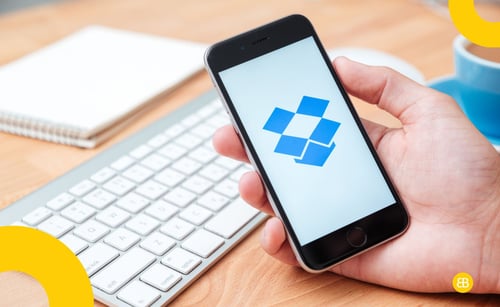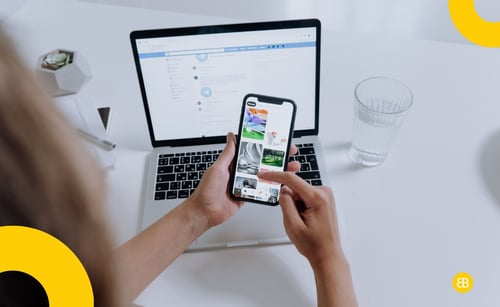Table of Contents
The $100,000 Mistake Founders Keep Making (And How the MVP Mindset Can Prevent It)
Every year, thousands of ambitious co-founders and product teams spend enormous effort building products no one wants. Not because the product idea lacked merit, but because the full version was launched too soon, with all the features and none of the validation. This high-risk approach often burns through budgets before the first 100 users even sign in.
That’s where understanding the minimum viable product definition becomes your startup’s greatest competitive edge. A true MVP—rooted in the Lean Startup methodology—empowers you to test assumptions, gather useful feedback, and evolve your product based on validated learning, not guesswork.
In this guide, we unpack what the term MVP actually means, what it doesn’t, and how to launch a product with just enough features to attract early adopters, measure user engagement, and make informed decisions. If you're building a new product, this article will help you make sense of the MVP concept in real-world terms.
What Is a Minimum Viable Product, Really?
The Minimum Viable Product (MVP) is a version of a new product that includes only the core features required to deliver a value proposition to early customers, with the least effort from your engineering team. It allows you to validate a product hypothesis by observing real behaviour and gathering data-driven feedback.
Coined by Frank Robinson, and popularised by Steve Blank and Eric Ries, the MVP concept was designed to help startups test ideas early, with minimal resources and maximum learning.
Unlike a prototype, an MVP is not a mockup. It’s a viable product—a functional version of your idea that customers can use, engage with, and provide feedback on. It’s how you test before you scale. It’s how you avoid over-investing in extra features that may never matter.
This includes:
-
A functional user interface (even with limited functionality)
-
A clear value proposition
-
The ability to test the business model and product-market fit
-
A means to collect feedback from early adopters
The MVP makes sense when your goal is learning, not perfection. It’s the foundation of an iterative process that leads to building products users actually want.
Why the Smartest Founders Start with an MVP (And the Costly Risk of Skipping It)
Skipping an MVP isn’t bold—it’s blind.
Too many founders rush to build the full product, convinced they need all the features to impress users or investors. But without real validation, all that effort is just a high-risk guess.
Here's the harsh reality:
More than 2 in 5 startups fail because they build something nobody actually needs.
(CB Insights, 2023 – “No market need” tops the failure list at 42%.)That’s not a tech problem—it’s a validation problem. And it’s avoidable.
That’s not a tech issue. That’s a validation issue. It’s a team betting everything—money, time, reputation—on features, flows, and frameworks that haven’t been tested with real users.
The Minimum Viable Product (MVP) gives you the fastest way to test your product idea with real users, gather useful feedback, and avoid wasting time on features no one wants.
A smart MVP helps you:
-
Validate your product hypothesis before you scale
-
Get useful feedback from early adopters and potential customers
-
Measure user engagement based on what actually gets used
-
Launch faster and start the learning loop earlier
-
Attract investors by showing traction and clarity, not just ideas
💬 “We thought our value was in our automation feature. Turns out, users cared most about the dashboard. That MVP test saved us from building the wrong thing.”
— EB Pearls Client
By starting small, you’re not thinking small—you’re making space for smarter decisions, faster pivots, and better outcomes.
Real-World MVPs That Launched Billion-Dollar Startups
Still wondering if an MVP has enough impact?
Some of today’s most successful tech companies didn’t begin with fancy apps or full-featured platforms. They started with a minimum viable product—and used user feedback from real people to shape what came next.
Let’s break down how three billion-dollar companies used the MVP approach to prove their product idea, test their value proposition, and launch to market faster—all while keeping risk low and learning high.
Airbnb: Selling Sleep on a Landing Page

The Problem: Two designers in San Francisco couldn’t afford their rent. A design conference was in town, and all the hotels were booked out. So they wondered—would travellers pay to stay in a stranger’s home?
The MVP: A basic landing page showing photos of their apartment. They listed three air mattresses and offered breakfast—hence the name “Air Bed & Breakfast.”
Why It Worked: Airbnb didn’t overthink their platform or build complex listings. They launched with a limited feature set focused on a real-world pain point: finding a place to stay when hotels are full. Their MVP helped validate that potential users were willing to pay strangers for short-term stays—before they ever invested in scaling.
Uber: One City, One Use Case

The Problem: In San Francisco, getting a taxi was slow, unreliable, and painful. Travis Kalanick and Garrett Camp saw an opportunity to use technology to streamline urban transport.
The MVP: A basic SMS service that allowed users to request a black car via text. The service was manual, limited to a single city, and built for iPhone users only.
Why It Worked: Uber’s MVP delivered just enough features to solve a high-friction problem. They didn’t try to build a full ecosystem with driver onboarding, dynamic pricing, or ratings. Instead, they focused on what mattered most—getting a ride, fast. That clarity helped Uber generate early buzz, validate their business model, and set the stage for their full app.
Dropbox: Explaining the Product Before Building It

The Problem: Cloud storage was clunky and unintuitive. Drew Houston believed that syncing files across devices could be seamless—but building the backend infrastructure would be expensive and time-consuming.
The MVP: A simple, 2-minute explainer video. It showed the product working as if it already existed. The video was shared on forums like Hacker News and tech communities.
Why It Worked: The video led to a huge spike in signups—with their waiting list jumping from 5,000 to 75,000 overnight. That was enough proof to justify building the product. Instead of wasting months guessing features, they used this early interest as validated learning.
The Core Characteristics of a True MVP
A true MVP should:
-
Solve one well-defined problem for a specific group
-
Contain just enough features to be usable and testable
-
Be released quickly with minimal resources
-
Enable you to measure user engagement
-
Support validated learning through metrics and conversations
-
Lead to future iterations based on feedback
If your product doesn’t allow for learning, it’s not an MVP—it’s just an incomplete app.
The 4-Step MVP Process: From Idea to Market Test

If you're wondering,
“Okay, I get what an MVP is—but how do I actually build one?”
You're in the right place.
This is where theory meets execution.
The good news? You don’t need a full engineering team or six-figure budget to launch something that creates real learning. You just need focus, clarity, and a process that keeps the user—and the data—at the centre.
Here’s how to move from product idea to market validation in four practical steps:
Step 1: Define the Problem (Not the Product)
Before you build anything, start by asking:
What’s the one problem we’re solving, and for whom?
Use these tools to get clarity:
-
Focus groups or user interviews
-
Customer complaints or gaps in existing solutions
-
Observations of how users “hack” together their own workarounds
This is where product managers and founders often go wrong—they brainstorm features instead of isolating the pain. But MVP means solving one problem really well, not offering everything for everyone.
🎯 Pro Tip: Define the “value moment”—the exact point where your product delivers a result that makes a user think: “This is exactly what I needed.”
Step 2: Map the Major Components (And Cut the Rest)
Once you’ve defined the problem, outline the core features required to solve it.
Ask:
-
What’s essential for delivering the value proposition?
-
Which features can wait until after we gather user feedback?
-
What can we fake or shortcut to test faster?
Use frameworks like the Business Model Canvas or User Story Mapping to visualise what matters. Remember, your MVP is not the stripped-down version of the final product. It’s the smartest expression of your hypothesis.
“All the features” is what you build after you know what matters. For now, build the smallest thing that proves the biggest assumption.
Step 3: Build the MVP with Minimal Resources
This is the part most founders overcomplicate.
MVP development doesn’t have to mean full-stack code. Depending on your concept and audience, you might build using:
-
A landing page + email capture form
-
A clickable prototype or no-code tool (Webflow, Bubble)
-
A concierge-style manual service that mimics automation
-
A lightweight mobile app with limited functionality
The goal here is to create a minimum viable product with a working user interface, built with minimal effort, that delivers real value—and collects data. You’ll know it’s ready when early adopters can try it and provide feedback without your team needing to explain everything.
MVP ≠ “cheap.” MVP = intentional.
Step 4: Launch, Measure, and Learn (Fast)
This is where the learning loop begins.
You’ll want to observe:
-
What users do (not just what they say)
-
Where they get stuck or drop off
-
Which features they ignore or love
-
Whether your value proposition resonates
Collect both quantitative (usage analytics, heatmaps) and qualitative (surveys, interviews) feedback. Then, decide what your next iteration should be:
-
Pivot: If you solved the wrong problem
-
Persevere: If users are engaging with your core feature
-
Scale: If you've validated the product and market fit
Remember: MVPs are not meant to impress investors. They’re built to uncover truth—quickly, affordably, and with just enough structure to guide the next move.
Testing and Iterating: Where Real Value Emerges
A successful MVP is not about the launch. It’s about what comes after:
-
Observe how real users engage (where do they click, pause, leave?)
-
Ask questions: what confused you? What did you expect?
-
Gather feedback from early adopters, not just friends
-
Track data to confirm assumptions (is your value proposition resonating?)
This iterative process leads to better user interfaces, smarter product decisions, and stronger business models.
How to Use A/B Testing to Improve Your MVP Without Guesswork

Once your minimum viable product (MVP) is in the hands of users, the next step isn’t scaling—it’s learning. And the fastest way to learn what works?
A/B testing.
Instead of guessing which features or designs perform best, A/B testing gives your product team a clear, data-driven way to measure what actually moves the needle.
How to Run a Simple MVP A/B Test
-
Choose a single element to test – e.g., signup button text
-
Create two versions – one with the original, one with a variation
-
Split your audience randomly between A and B
-
Measure user engagement – clicks, conversions, drop-off points
-
Use tools like Google Optimize, Optimizely, or VWO
This method helps you understand which version best supports your value proposition and drives key behaviours—like signups, upgrades, or task completion.
8. Evolving Beyond MVP: What Happens After You've Validated Your Idea
When your minimum viable product gains traction, the next move isn’t building all the features—it’s doubling down on what works.
Your MVP should now evolve into a minimum marketable product: something refined enough to deliver value at scale, but still focused. Use the user feedback and validated learning you’ve gathered to guide future iterations and make data-driven decisions about which features to add—and which to leave behind.
This stage is about momentum, not perfection. Let your product team follow the signal, not the noise.
The goal? Build a product that scales because it’s right—not just because it's ready.
MVP Metrics That Actually Matter to Ambitious Teams
The success of your minimum viable product isn’t measured by downloads or likes—it’s measured by learning and traction.
Focus on metrics that tell you if your product is delivering real value:
-
Activation rate – Are users reaching the “aha” moment?
-
Retention – Do they come back?
-
Engagement – Are they using the core features regularly?
-
Conversion – Are users taking key actions (signup, upgrade, invite)?
-
User feedback – What are they saying, and what are they ignoring?
These numbers help your product team prioritise features, validate your value proposition, and shape future iterations—without wasting effort.
10. The Most Common MVP Mistakes (and How to Avoid Them)
-
Even experienced teams fall into these traps when building a minimum viable product—and they cost time, money, and momentum.
⚠️ Mistake 1: Building too many features
Packing in extra features “just in case” dilutes your focus. MVP means solving one problem well—not releasing a half-built version of everything.
✅ Keep only what supports your value proposition.
⚠️ Mistake 2: Skipping user feedback
Without input from early adopters, you’re guessing. That’s not validated learning—it’s risk disguised as progress.
✅ Launch early, listen hard, iterate fast.
⚠️ Mistake 3: No success criteria
If you don’t define what success looks like—conversion, retention, engagement—you won’t know if your MVP is working.
✅ Set clear, measurable outcomes before launch.
💡 MVPs aren’t meant to impress. They’re meant to teach you what to build next.
TL:DR Best Practices & Pro Tips for Building a Successful MVP
-
Stay laser-focused on your value proposition
-
Build for early adopters, not mass market
-
Set word maximums in product copy to focus messaging
-
Empower your product manager to kill features, fast
-
Use focus groups to sense-check assumptions
-
Make data, not opinions, your decision-making tool
MVP FAQs: Straight Answers to the Questions You’re Probably Asking
Q: How long does an MVP take to build?
A realistic timeframe for developing a high-quality minimum viable product is 4 to 6 months. This includes time for product discovery, UX/UI design, engineering, testing, and feedback loops.
If you're building something meaningful—not just a landing page or prototype—then you’ll need this window to create something that delivers just enough features for early adopters and real-world validation.
Q: What’s the cost of an MVP in Australia?
In Australia, most robust MVPs cost between $60K and $80K, depending on scope, feature set, and whether you're working with an internal team or a specialist partner.
Keep in mind: MVP cost isn’t just about the number of features. It’s about how well you’ve defined the value proposition, the product hypothesis, and your user journey. A clear idea costs less to test than a fuzzy one.
Check out this article to know what contributes to the MVP cost in 2025
Q: Can I raise funding with just an MVP?
Yes. An MVP, backed by real user engagement or customer interest, is often enough to raise a pre-seed or seed round. Investors want to see traction—not perfection.
If your MVP proves there’s demand, validates your business model, and shows you're learning fast, that’s often more compelling than a polished product with no users.
Q: What if my MVP doesn’t get traction?
That’s actually a win. The purpose of your minimum viable product is to test assumptions—not to impress. If you’ve learned that your product idea isn’t hitting the mark, you’ve just avoided a far more expensive mistake.
Take the feedback, revisit your value proposition, and refine your next version. This is the heart of the lean startup methodology—launch, learn, and adapt.
Ready to Build an MVP That Actually Works?
You don’t need to build everything. You just need to build the right thing first.
A well-crafted minimum viable product helps you validate your idea, reduce risk, and launch with clarity—not guesswork.
At EB Pearls, we guide founders and product teams through every step: from defining your value proposition to launching and learning with purpose.
✅ Want to build smarter? Book a free MVP Strategy Session today.

Akash, COO at EB Pearls, blends technical expertise with business acumen, driving the creation of successful products for clients.
Read more Articles by this Author.jpg?length=460&name=Minimum%20Viable%20Product%20Definition_%20What%20MVP%20Actually%20Means%20(And%20What%20It%20Doesn%E2%80%99t).jpg)